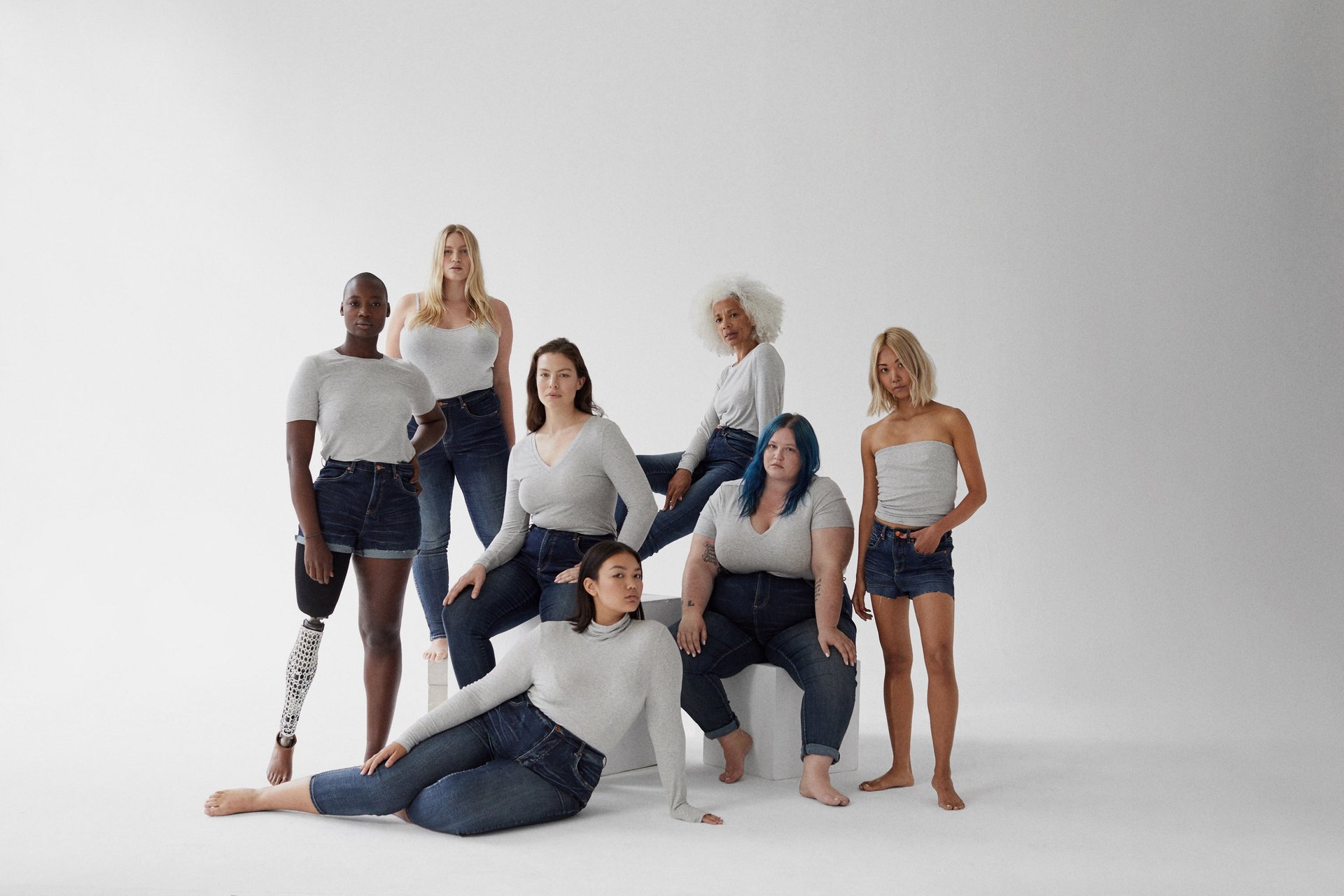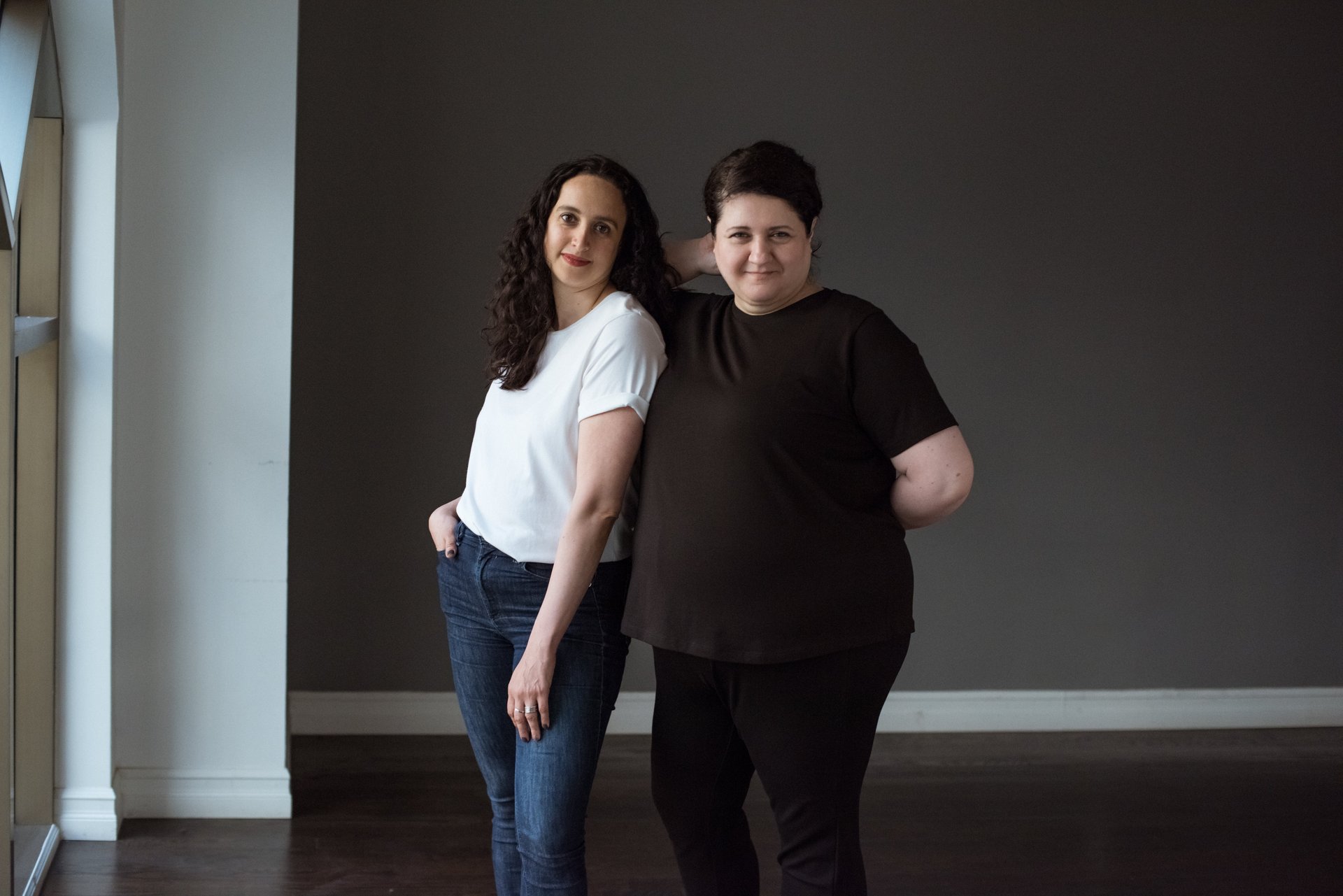Universal Standard wants to end the plus size binary once and for all
Last month, clothing brand Universal Standard announced that it would start carrying all of its items in sizes 00 to 40, officially making it the most size-inclusive retailer for women across the world.


Last month, clothing brand Universal Standard announced that it would start carrying all of its items in sizes 00 to 40, officially making it the most size-inclusive retailer for women across the world.
While trailblazing, the move isn’t surprising from Universal Standard, a brand founded in 2015 by Alexandra Waldman and Polina Veksler. Waldman, a former fashion journalist, first conceived of the company out of frustration that she was unable to find stylish clothes that fit her as a size-20 woman. As she put it to Quartz last year:
“You were either infantilized—you couldn’t buy a t-shirt that didn’t have a kitten or a puppy on it, or some sort of horrible French saying. Or you were hyper-sexualized. Your options were this kind of leopard-print bodystocking. The third branch on that trifecta was the very marmy stuff, fabrics that were the cheapest kind of synthetics to the point where you thought if you walked a little too quickly you might set yourself on fire.”
Since its 2015 debut, the company has since raised $8.5 million in funding. It recently launched its first high fashion partnership with Rodarte, a collaboration that came on the back of collections with Goop’s G. Label and J. Crew.

With US’s 00 to 40 sizing, the founders hope to usher in what they describe as the “new normal,” a sort of paradigm shift for apparel in which, as Veksler put it: “It doesn’t matter if you’re a size two or size 32, you should be able to walk into any store or go to any website and only ask yourself one question, and that is: ‘Do I like this?’ not, ‘Does this come in my size?'”
It’s worth noting, however, that Universal Standard and its ilk are only at the start of a long road when it comes to how fashion has historically treated bigger bodies. As one colleague put it, “Yes, I want plus-size people to be able to walk into any store and see and shirt and get a shirt in their size. But I also just want more of fashion to develop styles that look good on bigger bodies… It would be interesting to seen an evolution of fashion that reflected a majority of women being larger, instead of just attempting to bring larger women into the fold of what’s cool on runways.”
In any case, both Waldman and Veksler hope that US can set an example for the rest of the apparel industry by changing the way fashion thinks about (or doesn’t think about) bigger bodies.
What’s unique about Universal Standard’s place in fashion right now?
AW: We are the world’s most size-inclusive brand—that designs everything ourselves— and we see this as the future of fashion. What we’re trying to do is to break up that binary idea of plus size/not plus size. We really think that that needs to stop. We need to just have fashion for women. And only then will “the other” get the same access that smaller women have had forever and ever. It just doesn’t make any sense—if it ever did make sense—it makes zero sense now that 70% of American women are over size 14. It just makes no sense at all.
We wanted to create a brand that a size six with all the options in the world would want to buy, and that a size 26, who has never had access to great quality—to very modern clothing—would now be able to access.
Where did you get the idea for the brand?
AW: The whole idea for US actually came from a very sad conversation I once had with a girl, who’s a really big girl–I think she was even outside of the 28-size range that would be catered to by regular plus-size stores–and I said, “What designers do you like? Like, who do you love?” And she looked at me and she said, “I can’t afford to look at the world that way. First I have to know who makes my size. And then from that small pile I pick what I can.” And I thought to myself, wow, there’s this whole huge world that’s just locked away from her because she can’t participate in it. And so she just doesn’t bother. So I thought, I want to look like my peers. I want to look like I bought something that, you know, Polina could look at it and go, “Hey, where did you get that?”
And that’s what I think we’ve done: With our 00 to 40 sizing we announced that we’ve done that for all American women.
PV: And it’s not only about size, it’s representation as well. So size is important, but representation as it relates to age and race and sexual orientation and everything that we see when we walk down the street and the women as they are, as they’re walking down the street–that’s what we want the brand to represent, and really evolve the definition of beauty, from what has been. Part of that is the ability to be able to see yourself in the shopping experience.
We already show a very representative range of sizes and bodies. But what we wanted to do with the site is basically allow any woman to shop the website in her size. If you are an extra large you have the ability to do that.
AW: And they’re all real bodies. They’re not computer-generated, you know, these are all real humans. So it’s very important that you get to see what it looks like on actual women’s bodies. And recognizing how something will look on you, not just someone who is like 15 times smaller than you.
When you founded US in 2015 did you anticipate the demand for extended sizes, and how quickly the market is now growing?
AW: I’ve always known that there was a need for it simply because this is my size. And let’s not pretend that we’ve just discovered this island of women of this size. We’ve always been there; we’ve just been really ignored.
And I think that one of the reasons that this is taking off is because brands are beginning to pay attention and create clothes and attract consumers at a desperate time in the apparel industry’s development—it’s more like a degradation. Things are not going very well.
So how do you expect things to go well when you’re ignoring 67% of American women who don’t just buy for themselves when they cross the threshold—they buy for their children and their husbands and their mothers and their fathers. The prejudice against bigger bodies runs so deep that people just don’t want to affiliate themselves with bigger bodies.
So one of our aims is to change that. And the way to change that I believe we believe is through showing the diversity of women out there who are beautiful at any size, and really kind of changing the focus from the brand being in the center with everyone trying to look like the archetype of that brand to the consumer being in the center.
For us, fit is everything. And that has never been the case for bigger bodies and wanted smaller bodies and bigger bodies to have access to the same quality and level of fit. Which is unheard of. Why? Why should it be unheard of? It’s crazy. We’re talking about a majority of women. So it just seemed like a little bit of a no brainer to us.
Do you have competitors, or are you far above your competition right now?
More and more brands are extending their sizes to sort of envelop more people. This is such a huge, huge space that not only are we delighted to see more brands entering the space, we actually want to help. So you know, we wanted to do it first and next on our list is to empower the industry to do the same, as we did with J. Crew, who came to us and said, “We want to do this, but we have no idea how.”
We’re delighted to help. Rodarte stepped up and said, “We’d really like to provide something for all women.” I mean 00 to 40. That’s something. And we have more very interesting collaborations coming up. But people are waking up to the possibility that this could be done to the benefit of everyone, the industry and the consumer.
PV: And Alex always says she loves the Universal Standard, but is Universal Standard the only brand that she wants to wear for the rest of her life? No. You should be able to walk into any store and buy more than a candle or a bag.
Are you exploring more high fashion collaborations?
AW: We want to work and collaborate with anyone who sees the value in what we’re doing. So if we can work with an amazing brand to say, “Hey, the world is changing,” we’re more than delighted to do it.
Even if the brand is historically prejudiced against larger bodies?
AW: Let’s do it. Why not? I mean, Rodarte could not be more different from Universal Standard in terms of aesthetic, but we always think of that as a treat for our consumer. It’s like they have Universal Standard is always there, but then they get to dabble in something completely original.
There’s a big change coming. The world is changing, and I think that everyone who wants to remain relevant has got to start looking at the new normal as the north star. And that new normal is all of us as we are. it’s not changing ourselves to become closer to an archetype of a brand, but rather the brand embracing the consumer and saying, what can we do for you?
This interview has been edited and condensed.